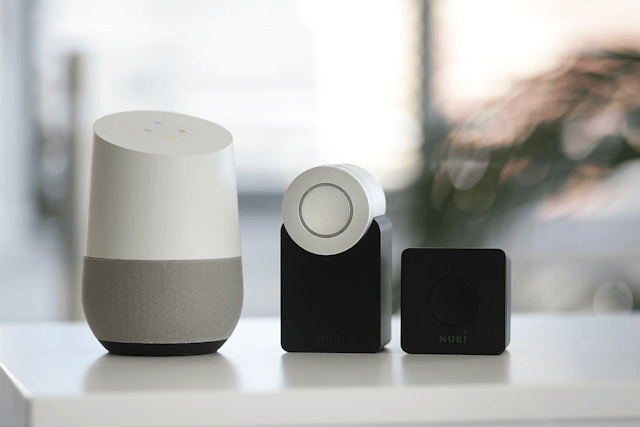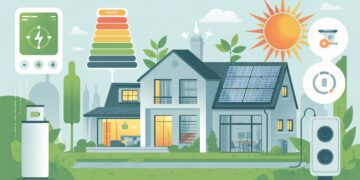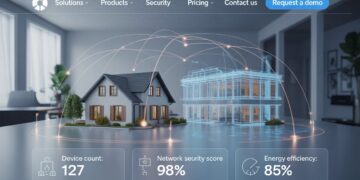Remodeling your home is a major investment so why not ensure that the updates you make today will stand the test of time? With technology advancing rapidly and sustainability becoming a necessity, smart home remodeling is the key to creating a living space that’s not only comfortable and modern but also built for the future.
Whether you’re upgrading a single room or planning a full renovation, here are essential smart home remodeling tips to future-proof your house and boost its value for years to come.
Why Future-Proofing Matters
The idea behind a future-proof house is simple: make design and technology choices that won’t become outdated or need a complete overhaul in a few years. As more homeowners embrace home automation and energy-efficient remodeling, future-proofing has shifted from a luxury to a smart, strategic decision.
Future-proofing offers:
-
Increased property value for resale
-
Enhanced convenience and comfort
-
Improved energy efficiency
-
Easier adaptability to new tech
-
Greater safety and security
By incorporating smart home upgrades now, you’ll create a living space that evolves with your needs—and with technology.
Start with Infrastructure
Before you dive into the latest gadgets, focus on building a solid tech-friendly foundation. Without the right infrastructure, even the best smart devices won’t perform at their full potential.
1. Upgrade Your Wiring and Connectivity
Modern smart homes require a reliable network. If you’re remodeling, consider:
-
Adding Cat6 or Cat7 Ethernet cables to support high-speed internet and device connectivity.
-
Ensuring ample outlets with USB and USB-C ports.
-
Including conduits in walls for future wiring upgrades.
2. Boost Your Wi-Fi
A mesh Wi-Fi system ensures strong, consistent coverage across your home, even in larger spaces or challenging layouts. Many smart home upgrades from thermostats to cameras depend on steady internet.
3. Install Smart Hubs and Surge Protection
Centralized hubs like Amazon Echo, Google Nest Hub, or Apple HomePod can control multiple devices. Install built-in surge protectors to safeguard sensitive electronics and appliances.
Smart Home Upgrades That Add Real Value
Once your infrastructure is ready, it’s time to consider which smart devices to include in your remodel. Start with features that improve daily comfort and security.
1. Smart Thermostats
These learn your habits and adjust temperatures automatically, improving comfort and cutting energy bills. Brands like Nest and Ecobee integrate seamlessly with other systems.
2. Smart Lighting
Install dimmable, color-changing, and motion-sensing lights. Control them from your phone or voice assistant, and program schedules for added convenience and security.
3. Smart Appliances
From ovens that preheat remotely to refrigerators that track groceries, modern appliances are now smarter and more energy-efficient than ever.
4. Home Security Systems
Install smart locks, doorbell cameras, and motion sensors. Monitor your home from anywhere and receive instant alerts about activity.
5. Leak and Smoke Detectors
These smart devices not only sound alarms but also send alerts to your phone, potentially preventing major damage or disasters.
These smart home upgrades not only make life easier, they help reduce utility costs and protect your home.
Sustainability and Energy-Efficient Remodeling
Combining technology with sustainability makes your remodel even smarter. Think beyond smart gadgets integrate long-term efficiency into the bones of your home.
1. Solar Panels
Solar energy is a major asset for a future-proof house. With tax incentives and improved efficiency, now is a great time to invest.
2. Insulation and Windows
Upgrade insulation, weatherproofing, and switch to energy-efficient windows to cut heating and cooling costs.
3. Smart HVAC and Irrigation
Use zoning systems for precise temperature control. Smart sprinklers save water by adjusting to weather forecasts and soil conditions.
Sustainable remodeling adds comfort, savings, and a lighter environmental footprint.
Flexible and Adaptable Room Design
Another smart remodeling strategy is to create flexible spaces that can serve more than one purpose.
-
Convertible home offices/guest rooms: Add built-in storage and a murphy bed or foldable desk.
-
Expandable kitchens: Add outlets and counter space for future smart kitchen gadgets.
-
Bathroom upgrades: Include smart mirrors, touchless faucets, and space for future tech add-ons.
As your lifestyle changes, these spaces can adapt without another full remodel.
Voice and App Integration
Choose a smart home ecosystem (Google Assistant, Amazon Alexa, or Apple HomeKit) to keep everything streamlined. A centralized system makes it easier to manage devices, automate routines, and maintain control via a single app or voice command.
Use voice to:
-
Set lighting moods
-
Adjust thermostats
-
Lock doors at night
-
Control music or media
-
Monitor security cameras
The more intuitive your setup, the more value and comfort it brings.
Budgeting and Planning Smartly
Future-proofing doesn’t mean spending everything all at once. A smart approach is to prioritize high-impact upgrades and take a phased remodeling route.
Tips for Budget-Savvy Remodeling:
-
Start with infrastructure (wiring, connectivity, insulation)
-
Choose energy-saving devices first
-
Compare long-term ROI before splurging on tech
-
Work with tech-savvy contractors familiar with smart home systems
-
Research compatibility between devices and ecosystems
By focusing on what matters most, you’ll get the greatest return from your smart home remodeling efforts.
Final Thoughts
As smart home technology continues to evolve, the homes we live in should evolve with it. A future-proof house isn’t just about installing the latest gadgets it’s about thoughtful design, sustainable materials, and flexible spaces that adapt to your lifestyle.









